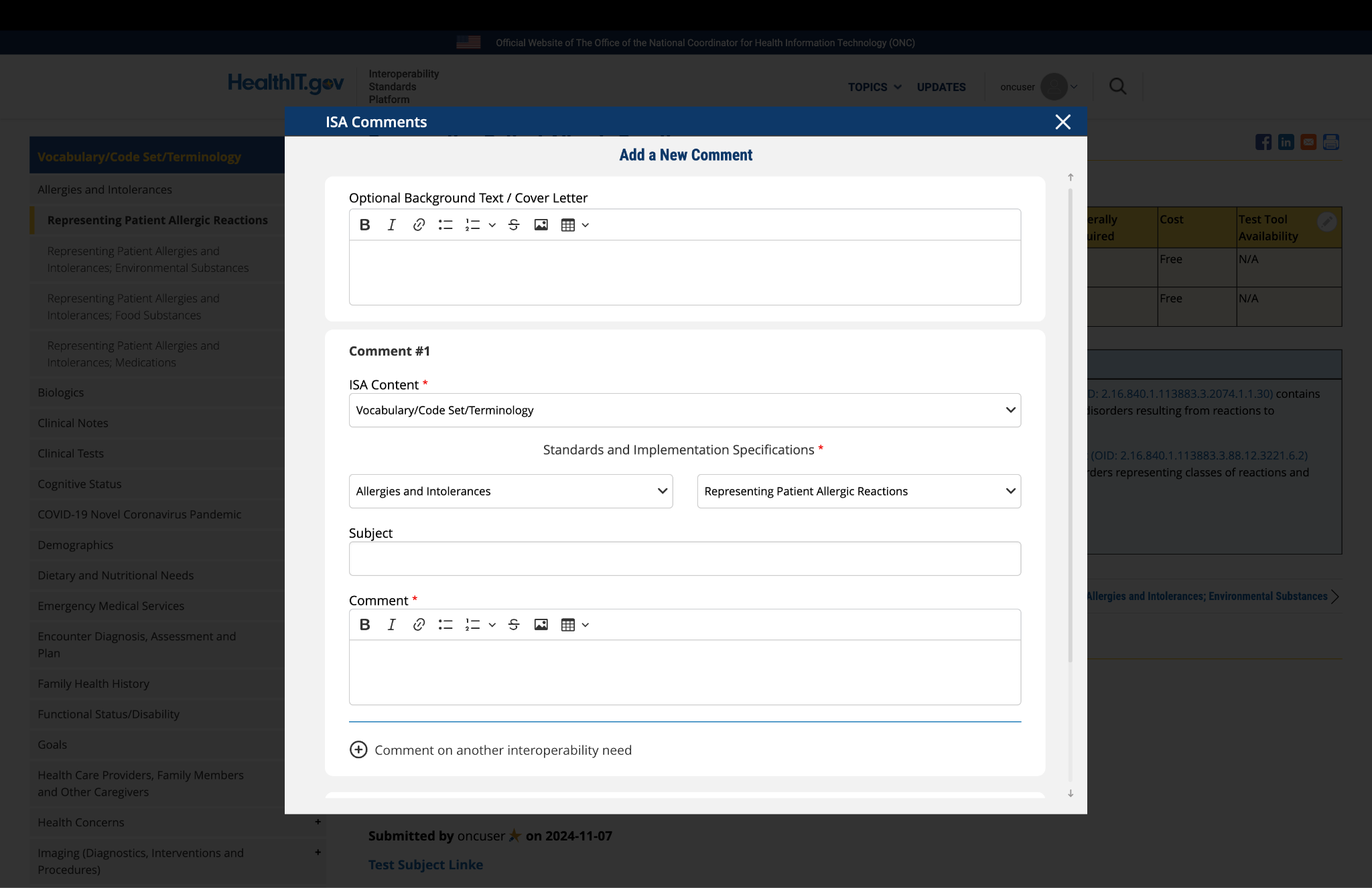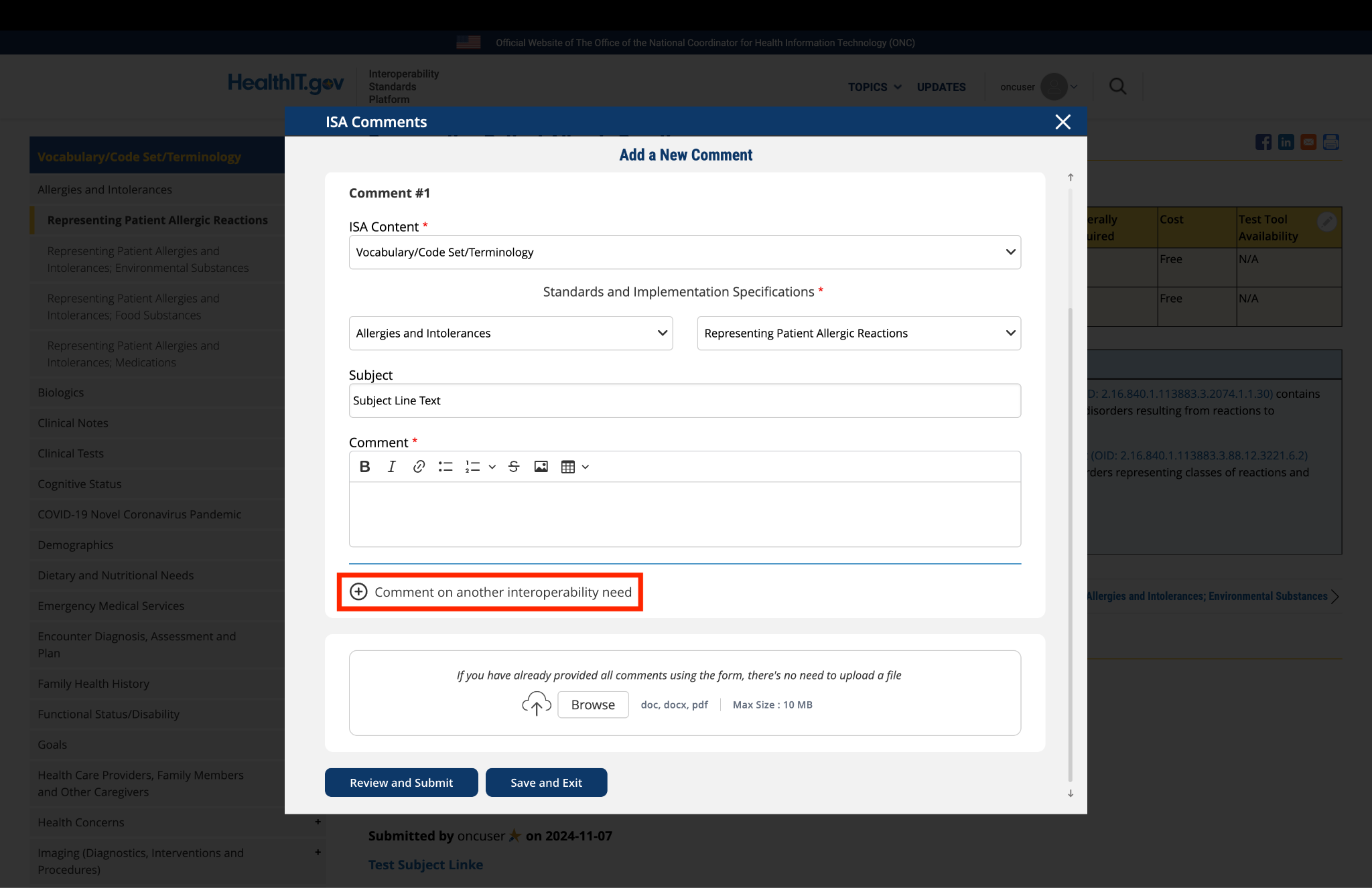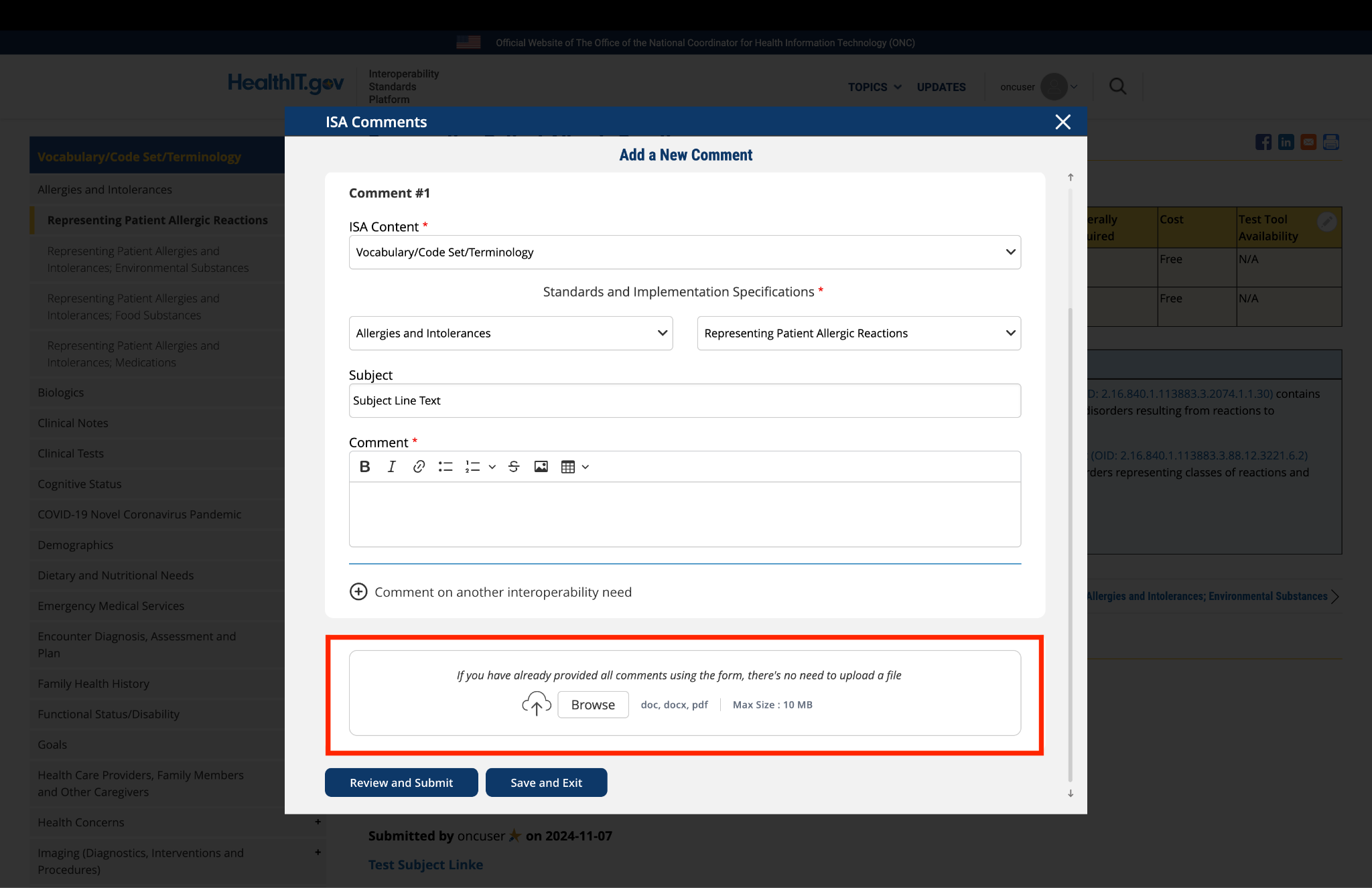| Type | Standard / Implementation Specification | Standards Process Maturity | Implementation Maturity | Adoption Level | Federally required | Cost | Test Tool Availability |
|---|---|---|---|---|---|---|---|
|
Standard for observations
|
Final
|
Production
|
Feedback Requested |
No
|
Free
|
N/A
|
|
|
Standard for observation values
|
Final
|
Production
|
Feedback Requested |
No
|
Free
|
N/A
|
| Limitations, Dependencies, and Preconditions for Consideration |
Applicable Value Set(s) and Starter Set(s)
|
|---|---|
|
|
Comment
Submitted by mattreid on
The AMA requests that the…
The AMA requests that the Current Procedural Terminology (CPT) code set be added to the standards listed in Section I: Representing Assessment and Plan of Treatment. This request was made in 2020 during which time the CPT code set was added and then removed.
The CPT Evaluation and Management codes specifically address multiple categories and subcategories for the broad range and levels of assessing and treatment planning for the patient, including:
- Office or other outpatient services
- Hospital observation services
- Hospital inpatient services
- Consultations
- Emergency department services
- Critical care services
- Nursing facility services
- Domiciliary, rest home, or custodial care
- Home services
- Case management services
- Non-face-to-face services
The CPT codes convey the types of information that is required to alert providers and will empower them to proactively monitor their patients throughout the care continuum, improving patient outcomes and enhancing care continuity, while reducing preventable readmissions. In addition, the need for hospitals to share Admit, Discharge and Transfer data throughout the care community is critical, and now required, from improving interoperability and transitions of care for patients. These types of alerts to providers will empower them to proactively monitor their patients throughout the entire continuum of care, significantly improving patient outcomes and care continuity, while reducing preventable readmissions.
CPT is a comprehensive and regularly curated uniform language that accurately describes medical, surgical, and diagnostic services and provides for reliable communication among users. It has an extremely robust and mature development process with open and transparent meetings and clinical input from national medical specialties and relevant stakeholders. It is the most widely adopted outpatient procedure code set. Use of the CPT code set is federally required under HIPAA.
Submitted by pwilson@ncpdp.org on
NCPDP Comments
NCPDP supports ONC’s recommendations.
Submitted by gldickinson on
Preserving Clinical Context
General Comments:
USCDI specifies lots of clinical data classes and data elements
- Resolving to myriad de-coupled fragments
- With vanishingly little focus on:
- Clinical context and vital inter-relationships, e.g., between problems, diagnoses, complaints, symptoms, encounters, allergies, medications, vaccinations, assessments, clinical decisions, orders, results, diagnostic procedures, interventions, observations, treatments/therapies, referrals, consults, protocols, care plans and status...
- Elements and context + purpose of capture: e.g., blood pressure, its measurement (systolic, diastolic), its unit of measure (mm/Hg), its reason for capture, its context of capture (sampling site, sampling method, patient position, at rest/during/post exercise...
It is crucial to consider and determine/resolve how clinical content and context are bound together and preserved in USCDI. The ultimate end user (often a clinician) must be able to readily discern context and inter-relationships – otherwise USCDI places an undue (and often unresolvable) burden on this user. Only the source EHR/HIT system can structure clinical content and context properly. Once data is stuffed into the USCDI framework and related exchange artifact (e.g., FHIR resources) this opportunity is forever lost.
Submitted by mattreid on
The AMA requests that the…
The AMA requests that the Current Procedural Terminology (CPT) code set be added to the standards listed in Section I: Representing Assessment and Plan of Treatment. The CPT Evaluation and Management codes specifically address multiple categories and subcategories for the broad range and levels of assessing and planning treatment for the patient.
CPT is a comprehensive and regularly curated uniform language that accurately describes medical, surgical, and diagnostic services and provides for reliable communication among users. It has an extremely robust and mature development process with open and transparent meetings and clinical input from national medical specialties and relevant stakeholders. It is the most widely adopted outpatient procedure code set. Use of the CPT code set is federally required under HIPAA.








Submitted by mattreid on
Current Procedural Terminology (CPT) code set be added
The American Medical Association (AMA) requests that the Current Procedural Terminology (CPT) code set be added to the standards listed in Section I: Representing Assessment and Plan of Treatment. Currently LOINC and SNOMED CT are listed as standards for this interoperability need with no explanation about which codes to consider or how they are used to identify a patient’s assessment and plan of treatment.
The CPT Evaluation and Management codes communicate to other providers that the assessment and plan of treatment have been completed on a patient, as well as specific clinical information about the assessment, plan, and setting in which the assessment occurred. The complexity of the patient assessment, data analyzed, and patient management are conveyed in these codes. They support continuity of care for the patient throughout their health care journey. They also support the requirement for hospitals to share Admit, Discharge and Transfer data to improve patients’ transitions of care. In addition to the CPT Evaluation and Management codes that capture assessment and plan of treatment for individual encounters, additional CPT codes address the unique considerations in assessments and treatment plans across broader care episodes, such as Case Management Services – Medical Team Conferences, Care Plan Oversight Services, Cognitive Assessment and Care Plan Services, Care Management Services, and Psychiatric Collaborative Care Management Services.
CPT is a comprehensive and regularly curated uniform language that accurately describes medical, surgical, and diagnostic services and provides reliable communication among users. It has an extremely robust and mature development process with open and transparent meetings and clinical input from national medical specialties and relevant stakeholders.